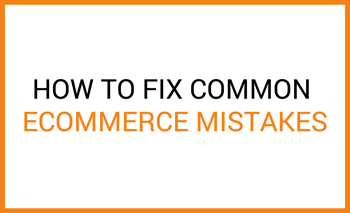Fixing eCommerce Mistakes with Magento
 With the amount of eCommerce sites available to customers today, having the best product on the market just isn’t enough to drive sales. The customer experience is proving to be more and more important to the customer journey and influences customer lifetime value. That’s why SEMrush conducted site audit research to find out which issues eCommerce websites struggle with the most.
With the amount of eCommerce sites available to customers today, having the best product on the market just isn’t enough to drive sales. The customer experience is proving to be more and more important to the customer journey and influences customer lifetime value. That’s why SEMrush conducted site audit research to find out which issues eCommerce websites struggle with the most.
The SEMrush team reviewed 1,300 online shops and identified 80 technical and SEO issues that can drastically decrease your customer’s experience and chance of sales. While we certainly suggest reading their full findings, here are a few common mistakes that they found and how we suggest fixing them.
Outdated Technology
We’re familiar with this mistake. Many organizations don’t realize that an eCommerce site is not a “set it and forget it” tool. It takes constant improvements and monitoring to serve your business as well as it can.
An example SEMrush provides here is the use of flash content. While flash content might look good, it can cause troubles with search engine indexing and load times, meaning customers might not be able to find your site as easily and, if they do, the load time could deter them from sticking around.
When it comes to keeping your eCommerce site up to date, we recommend working with Magento and a certified team of Magento experts. Magento Commerce is continuously adapting to the changing expectations of the eCommerce shopper, and they release updates to meet those needs. With necessary patches released as needed and the expertise of a certified Magento team, you can be sure that your eCommerce site will be on the cutting edge of customer experience.
Security Updates
Site security is a huge concern for eCommerce shoppers. After all, a potential customer needs to trust that you will protect their sensitive information before they consider making a purchase. Two things that SEMrush pointed out in their study is the importance of HTTPS implementation and Server and SSL Certificates.
A website that starts with https:// instead of the older http:// means that the site is secured by SSL. An SSL certificate means that all data passed between the web server and browser remains private. Smart customers (or those who have been hacked before) know to look for this feature before trusting your site with their payment information.
The good news is that leveraging Magento means you don’t have to worry about these security features. In fact, using Magento for your eCommerce site ensures that your site achieves PCI Compliance, meaning customer data is completely secure.
Magento also offers a Security Scan tool, which allows merchants to regularly monitor their sites and receive updates regarding known security risks, malware, and unauthorized access. Security Scan provides 30 security test to identify potential security issues like checking the installation of Magento patches, configuration issues, and whether or not security best practices have been followed.
So, let’s say you know your site doesn’t have an SSL certificate or you’re implementing Security Scan and have updates that need to be made. What’s your next step? That’s where we recommend a Managed Services agreement with our team. With Managed Services, not only will you have access to our team of talented, trained, and certified developers when you need them, but you will have a commitment from our team to timely maintenance and support at a lower rate. Our team provides performance reports like uptime and transaction monitoring, testing, and more. Beyond that, resources can be allocated to content, design, architecture or patches, upgrades, reports, or anything else your site might need.
Website Performance
Website performance has never been so important. Your website’s loading speed has an effect on your user experience and your rankings in search engines. SEMrush found that for every second of delay in load time, you can see a 7% decrease in conversions. That’s money you can’t afford to lose.
There are ways to prevent your site from slowing down. Implementing a load testing system can help determine your site’s maximum operating capacity and pinpoint the places that are causing harm to your site’s performance. Another good place to start is by assessing these ten things to improve site speed, including reducing image sizes, checking your log files for errors, and enabling cache, flat products and catalogs, and JS and CSS merge.
Indexing plays a big part in site performance as well. Indexing is the transformation of data to make your site run quicker and perform better. Luckily, the latest Magento release has improved indexing performance, including sharding and parallel processing of indexers, which reduces indexation times by over 60% to support larger sites and quicker product updates. Updating to the latest Magento release will not only keep your technology up to date, but will help improve site performance as well.
The rest of the SEMrush study goes into detail on some other common eCommerce website mistakes, including on-page optimization and technical SEO considerations. We recommend checking out the full report for all of that info. If you’re ready to tackle the above issues with Magento, contact our team to get started.

